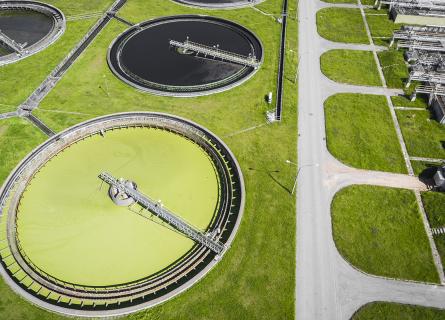
Water sector digitalization – what does it mean for the citizens?
Water sector digitalization – what does it mean for the citizens?
Digitalisation of water sector becomes visible for instance in concepts such as Water 4.0, or in the use of Building information modelling (BIM) in project delivery or doing predictive maintenance utilizing IoT solutions. The skillset of water sector professionals has widened to cover totally new areas, and the experts now have easy access to more and more information to help them in their work. But how does this technological development impact the life of citizens? Is water sector digitalization something that can make a difference for the taxpayer?
Digitalisation of water sector becomes visible for instance in concepts such as Water 4.0, or in the use of Building information modelling (BIM) in project delivery or doing predictive maintenance utilizing IoT solutions. The skillset of water sector professionals has widened to cover totally new areas, and the experts now have easy access to more and more information to help them in their work. But how does this technological development impact the life of citizens? Is water sector digitalization something that can make a difference for the taxpayer?
Customer service and smart metering – the obvious ones?
Perhaps one of the most visible change is the digitalization of customer service. For instance communicating via social media or providing services via their websites water utilities are able to quickly reach most of their clients.
Remotely read water meters is an obvious one as well. They bring benefits for the water utilities in terms of more accurate and real-time monitoring of water consumption, water balance and unaccounted-for water, but also make life easier for the water consumers whilst driving efficient use of water resources.
Increasing need for renovation of water utilities and networks
The maintenance and renovation of critical infrastructure is a topic for political discussion. Municipalities have to prioritise their investments and many are struggling with decreasing budgets and resources. Nevertheless, a recent example from Finland, a study about Finnish water sector investment needs in 2020-2040 indicates that the renovation investments have to be doubled in order to maintain the current level of water supply. Investments tend to mean increasing water tariffs, so it is not insignificant for the consumers how this money is used. By combining network information systems, automation systems and various modeling tools, short- and long term planning of investments as well as energy efficiency of operation can be optimized and risks to water quality can be minimized.
But what about BIM, IoT, digital twins..?
Digital twin – a digital replica of a plant is a known concept in the industy sector, where the achieved saving effect may rise up to 75% in cost and time compared to traditional practices*. Likewise, a virtual model combined with predictive maintenance could bring significant efficiencies both for utilities and networks. Dynamic process simulation included in the BIM model, combining sewer and wastewater treatment process models can help to run the process efficiently and safely. As water utility operators have visual analytics to support their decision-making and helping to carry out timely maintenance, it will in the end of the day benefit the whole city and its residents. Whereas the industry sector focus may be in avoiding the risk of downtime or revenue loss, cities and municipalities can gain cost savings and increase the reliability of water supply.
This has also brought new challenges previously unknown for water utilities – for instance how to prevent and fight cyber threats or cyber-physical threats. These things covered, the digitalization does not only bring the whole water sector to a new level, but eases the life of citizens and ensures the availability of clean water.
Read more about AFRY Real Digital Twin
*Reinhart, G. & Wünsch, G. (2007). Economic application of virtual commissioning to mechatronic. Production Engineering – Research and Development, 1(4), 371–379




